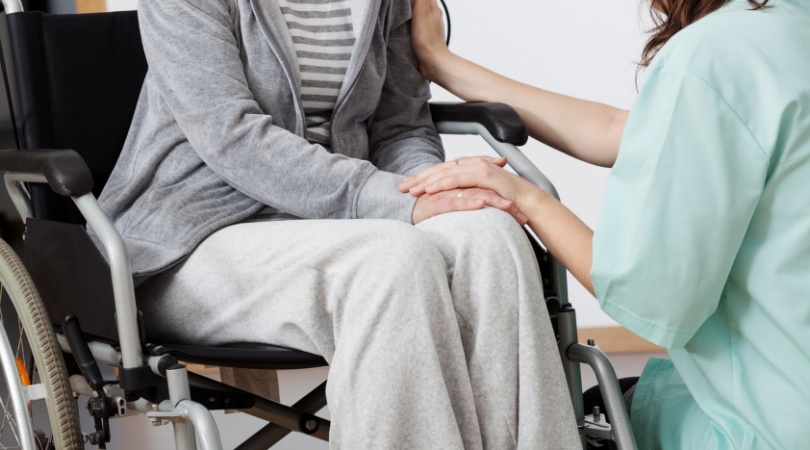
Senior citizens in nursing homes are complex. Half of them are 85 years of age or older. Below 1% are 65 years old. The majority of nursing home residents are women. Most of them are single and often don't have any family members. Some of them may have been widowed, divorced, or were never married. Families of these residents often are small and have little or no influence over their lives.
Economic factors
The demand for nursing homes is influenced by various explanatory variables, including Medicaid and economics. The National Long Term Care Survey provides a national representative sample of older persons with disabilities. It includes both institutionalized and community-based older adults, and combines state-level data. Each sample member is either Medicaid-eligible (or private-pay), and each category is assigned a probability of placement in a nursing-home.

Qualifiers
There are many factors that affect the quality of care offered in nursing homes. These criteria take into account many factors such as physical, cognitive, or social needs. Some applicants for nursing homes may require assistance with various activities, including cooking, cleaning, and even using a telephone. There may be special requirements for medical equipment and assistance with eating, toileting and continence.
Residents
Family members are often reluctant about leaving their loved ones in nursing homes. Only a few residents live alone. The elderly can be assisted by their family members to assist with basic daily living activities, communicate with staff, and help with behavioral issues. Families can offer comfort and support to seniors who are going through major life changes. It can be difficult to choose the right nursing home for your loved ones.
Family members are responsible
While it is important to recognize the responsibilities of loved ones in a nursing home, they are often unclear. This article examines issues related nursing homes' policies and attitudes regarding family involvement. We will be focusing on open communication as it can help to prevent miscommunications and foster quality care and a high level of quality life for residents.

Residents' behaviour
These tips will help prevent residents from causing harm to your patients. First, don't rush or use quick movements to communicate with residents. As these can lead to confusion and vulnerability, residents will be more likely to react defensively if you use an authoritative or harsh tone of voice. The last thing you should do is avoid touching residents. Residents may become violent and can cause the situation to escalate. Instead, approach residents at the front and ask them questions. Then, respond with soothing facial expressions.
FAQ
What are the main purposes of a health care system
The health care system should offer adequate medical facilities to those who require them, at a reasonable price, and ensure that everyone has access to high-quality services.
This includes providing preventive care, encouraging healthy lifestyles and the appropriate treatment. It also involves providing an equitable distribution of health resources.
What is the significance of the health-care system?
Any country's economy depends on the health care system. It improves the quality of life and helps people live longer, more healthy lives. It creates jobs for nurses, doctors, and other medical professionals.
No matter what income level, health care systems ensure that everyone has access to quality healthcare services.
Understanding how the healthcare system works is crucial if you want to pursue a career in medicine, nursing, or any other medical profession.
What are the three levels of health care facilities?
The first level is general practice clinics which provide basic medical services for patients who do not require hospital admission. If required, they can refer patients for treatment to other providers. This includes nurse practitioners, general practitioners and midwives.
The second level of care is primary care centers, which provide outpatient services that include emergency care. These include hospitals.
The third level is secondary care centers which provide specialist services such as orthopedic surgery, eye surgeries, and neurosurgery.
Statistics
- For the most part, that's true—over 80 percent of patients are over the age of 65. (rasmussen.edu)
- Over the first twenty-five years of this transformation, government contributions to healthcare expenditures have dropped from 36% to 15%, with the burden of managing this decrease falling largely on patients. (en.wikipedia.org)
- For instance, Chinese hospital charges tend toward 50% for drugs, another major percentage for equipment, and a small percentage for healthcare professional fees. (en.wikipedia.org)
- Foreign investment in hospitals—up to 70% ownership- has been encouraged as an incentive for privatization. (en.wikipedia.org)
- The healthcare sector is one of the largest and most complex in the U.S. economy, accounting for 18% of gross domestic product (GDP) in 2020.1 (investopedia.com)
External Links
How To
What are the main segments of the Healthcare Industry industry?
The key segments of healthcare include pharmaceuticals, diagnostics biotechnology, therapeutics, diagnosis, biotechnology and medical equipment.
Medical devices include blood pressure monitors, defibrillators, stethoscopes, ultrasound machines, etc. These products are usually designed to diagnose, prevent, or treat diseases.
Pharmaceuticals are drugs that are prescribed to treat disease or reduce symptoms. Examples include antibiotics, antacids, antihistamines, contraceptives, etc.
Diagnostics are tests performed by laboratories to detect illness or injury. There are many types of diagnostics: blood tests; urine samples; CT scans; MRI scans; X-rays.
Biotechnology refers essentially to the use of living organisms (such bacterium) to create useful substances which can be used by humans. Some examples include insulin, vaccines, and enzymes.
Therapeutics are treatments administered to humans to treat disease or relieve symptoms. They may include drugs, radiation therapy, or surgical interventions.
Information technology for health is a category of computer software that helps physicians and their teams manage patient records. It allows them to track the medications being taken, their timing, and if they are functioning properly.
Medical equipment is anything used to diagnose, treat, or monitor conditions or illnesses. Dialysis machines include pacemakers, ventilators and operating tables.